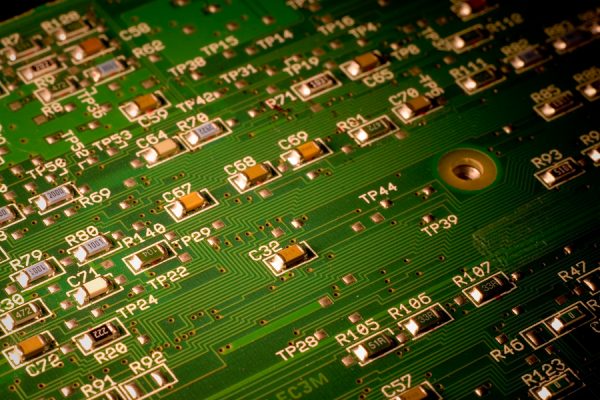
It is estimated that around 50 million tons of e-waste will be produced in 2017, which is significantly more than the 41 million tons produced in 2015. Why does this matter? E-waste contains hazardous chemicals and heavy metals such as lead and mercury that are harmful to humans and the environment. When e-waste is sent to landfills, these harmful substances will eventually begin leaking into the environment, where they can contaminate our air and water supply.
E-waste is a global problem, but one area of the world that definitely needs to address this serious issue is Silicon Valley.
E-Waste in Silicon Valley
Several months ago, Apple released its Environmental Responsibility Report, which is a progress report that outlines the company’s sustainability initiatives for the 2016 fiscal year. Within this report, Apple announced plans to make devices entirely out of recycled materials instead of mining for new materials. At the time of the announcement, the company admitted that they did not know exactly how to achieve this goal, but that they were committed to figuring it out.
Despite this commitment to reusing materials, Apple still forces its e-waste recyclers to shred all devices instead of repairing and reusing them. These “must-shred” policies prevent e-waste recyclers from prolonging the lifespan of electronic devices. If Apple was so committed to reusing materials instead of mining for new ones, wouldn’t they reverse their stance on this policy?
Apple isn’t the only company that is guilty of contributing to the e-waste problem. To date, over 20 states have established laws that hold manufacturers such as Apple, Toshiba, and Sony accountable for responsibly recycling of their e-waste. But, these states have failed to strictly enforce these laws, which has led to rampant fraud. Even the New York Times reported in 2013 that recyclers were fraudulently inflating the amount of waste they collected from these manufacturers.
But, the real problem in Silicon Valley does not have to do with this decision to shred e-waste instead of reuse it or the allegations of fraud. Many environmentalists blame all of Silicon Valley for the increase in e-waste because of their manufacturing model of planned obsolescence.
Planned Obsolescence & Electronic Devices
Planned obsolescence is a policy where designers and manufacturers intentionally produce products that have a limited life span. By doing so, they are able to increase sales by reducing the time between purchases. Technology companies introduce new smartphones, tablets, laptops, and other devices on a yearly basis. Every time a new product is announced, consumers wait anxiously for its release, sometimes buying a new smartphone to replace one that is only a year or two old.
But, consumers aren’t buying new devices just because they want something new and flashy. In many cases, consumers are forced to buy new products after several years because the device is malfunctioning or the software is outdated. To put it simply, Silicon Valley is no longer designing products with durability in mind. By shortening the life span of these products, Silicon Valley plays a huge role in the production of global e-waste.
But, it’s not just smartphones, tablets, and computers that are being replaced faster than ever. A study conducted by ENDS Europe revealed that the life span of all electronic devices, including household appliances, is shorter than it has ever been. The report noted that in 2004, only 7% of large household appliances had to be replaced within the first five years. This number increased to 13% in 2013, which proves that products today have a much shorter life span than they did in the past. This report also revealed that 8.3% of appliances are purchased in order to replace defective appliances, which shows that the durability of the product is an issue.
Do manufacturers realize that they are contributing to the problem? Yes. In fact, a number of tech companies have lobbied against legislation that would extend the life span of electronic devices. This occurred most recently in New York with the Fair Repair Act, which is legislation that would require tech companies to provide repair guides and sell replacement parts and tools to consumers. If passed, this law would make it easier for consumers to repair their existing device so they would not be forced to buy a new one every time a device malfunctioned. Lobbying records in New York show that Apple, Verizon, Lexmark, and other tech giants have actively opposed this bill.
How to Resolve the E-Waste Problem
It’s very unlikely that anyone will be able to get tech companies to rethink the strategies that have made them billions. Instead of trying to fight their planned obsolescence policy, the focus needs to be on educating consumers on the importance of e-waste recycling. Many consumers may not realize that they shouldn’t toss their electronic device into the trash and send it to a landfill, where it could potentially harm people and the environment. They also might not be aware that electronic devices can’t be sent to local recycling centers that process paper and plastic. If consumers start to recycle their e-waste in a responsible manner, the world may be able to offset some of the negative effects of planned obsolescence.
Of course, Silicon Valley isn’t solely to blame for the world’s e-waste problem. Everyone—consumers and businesses—should feel responsible for this issue and take action in order to protect the environment and our society.
Founded in 2002, ERI is now the leading recycler of e-waste in the United States. Our facilities in California, North Carolina, Washington, Colorado, Indiana, Massachusetts, and Texas process more than 250 million pounds of e-waste ever year, and are capable of handling more than 15,000 pounds of e-waste per hour. To learn more about our services or to request a quote, contact us today.